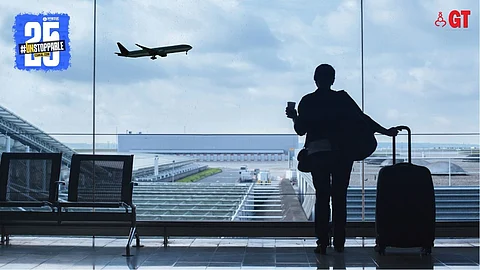

Earlier this week, I met an acquaintance who was making purchases of Goan packed delicacies that amounted to a few thousand rupees. It was obvious that he was taking all that back to the United Kingdom, where he is now settled.
In a causal conversation, he said he was leaving the next morning and that he had come to Goa for just five days to participate in the village feast.
April, May are the holiday months in Goa, and despite what the tourism stakeholders in Goa may be saying, that May is the month when the numbers of holidayers drops, that has not been the case in the past.
Traditionally, the month of May has been when the Goans, who are settled outside the State, would return for a holiday in Goa. That, of course, was before Goa turned into a tourism destination, but this practice continued and still continues to this day.
Traditionally, the month of May has been when the Goans, who are settled outside the State, would return for a holiday in Goa. That, of course, was before Goa turned into a tourism destination, but this practice continued and still continues to this day.
Goans, especially those in Mumbai, and there were many there, would take the bus or the steamer to Goa; it was the month when the Bomboikar came home and was also easily recognisable on the city streets or village roads.
There was more than one reason for this May holiday in Goa. The main one was of course that schools and colleges were closed at the end of the academic year, so children studying would be free to travel and come visit their grandparents and relatives in Goa.
It was when the extended families got together and went on picnics to the beaches.
The other reason was that it was the season when Goa abounds in fruits, feasts and festivals. May is also the time when church feasts and temple zatras are at their highest in Goa.
So, whether it was to pay obeisance to the patron saint and sing a litany at a cross in the ward, or pay obeisance to the family deity, they would all come without fail.
The other reason was that it was the season when Goa abounds in fruits, feasts and festivals. May is also the time when church feasts and temple zatras are at their highest in Goa.
The Bomboikar would bring with them those goodies that were available in the metropolis and take back from Goa that which wasn’t available for sale in that city.
Ask anyone who remembers those days travelling in buses, where the scent of ripening jackfruit, would mingle with that of mangoes, cashews, and if somebody dared to open a bottle of feni, then it would embrace that smell, too.
Of course, the heavier and larger items, jackfruit included, would be loaded on top of the bus, but there would always be some in the bus, that was perhaps even shared.
Yes, the Bomboikar came for the mangoes, jackfruits and all the other summer fruits that you can only get in Goa, like the wild berries called chunna, kantam in Konkani.
They didn’t stay in hotels as they had their own homes; they dined sparingly in restaurants for the cooks in kitchens at home would be hard at work rustling up the best of dishes; they didn’t go sightseeing, but made the pilgrimage to the temples and churches.
May, therefore was the month that, in the years past, saw the largest number of holidayers in Goa. They, perhaps, could not be classified as tourists, but they were holidayers all the same.
They didn’t stay in hotels as they had their own homes; they dined sparingly in restaurants for the cooks in kitchens at home would be hard at work rustling up the best of dishes; they didn’t go sightseeing, but made the pilgrimage to the temples and churches; they didn’t gawk at the beaches but went for a sea bath, not just once, but quite a few times.
They do come even today. Perhaps not in buses as they did once, but they do fly down, and they do take back Goan fruit, not in basket loads as in the past, but packed such that the smell does not waft in the confined space of the plane.
Packaged and finding place in their suitcases are also Goan sweets and pickles. In the past, the bebinca, doce, perada (guave cheese), mangada (mango jam), raw mango pickle, para (fish pickle) were all made at home. Today, they can be picked off the shelf in the supermarkets and stores, all branded and even vacuum-packed if required with FDA registration, as did the man who had come from the UK.
The Goans abroad who come on holiday may not be considered tourists, but they do contribute to the economy by their purchases. And if, in the past, they didn’t dine out, today they most definitely do.
The Goans abroad who come on holiday may not be considered tourists, but they do contribute to the economy by their purchases. And if, in the past, they didn’t dine out, today they most definitely do.
Rather than say that May is when the tourists are less, here is a segment that can be tapped by hoteliers, restaurateurs and the Goan spice and sweet cottage industry. Can it be done?